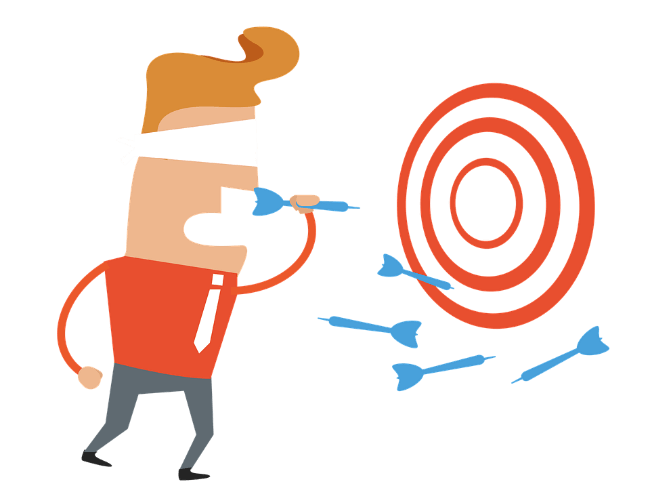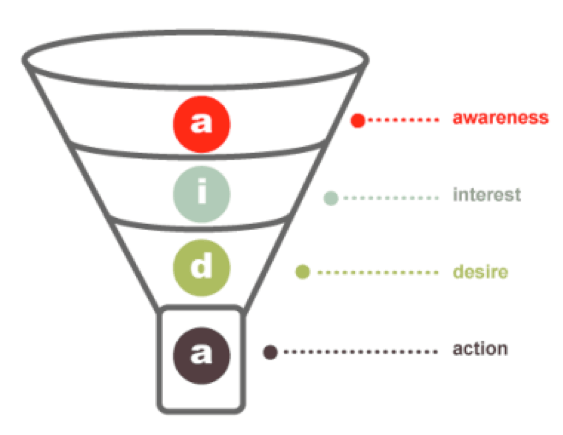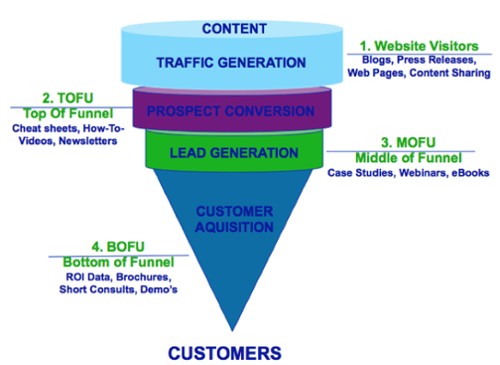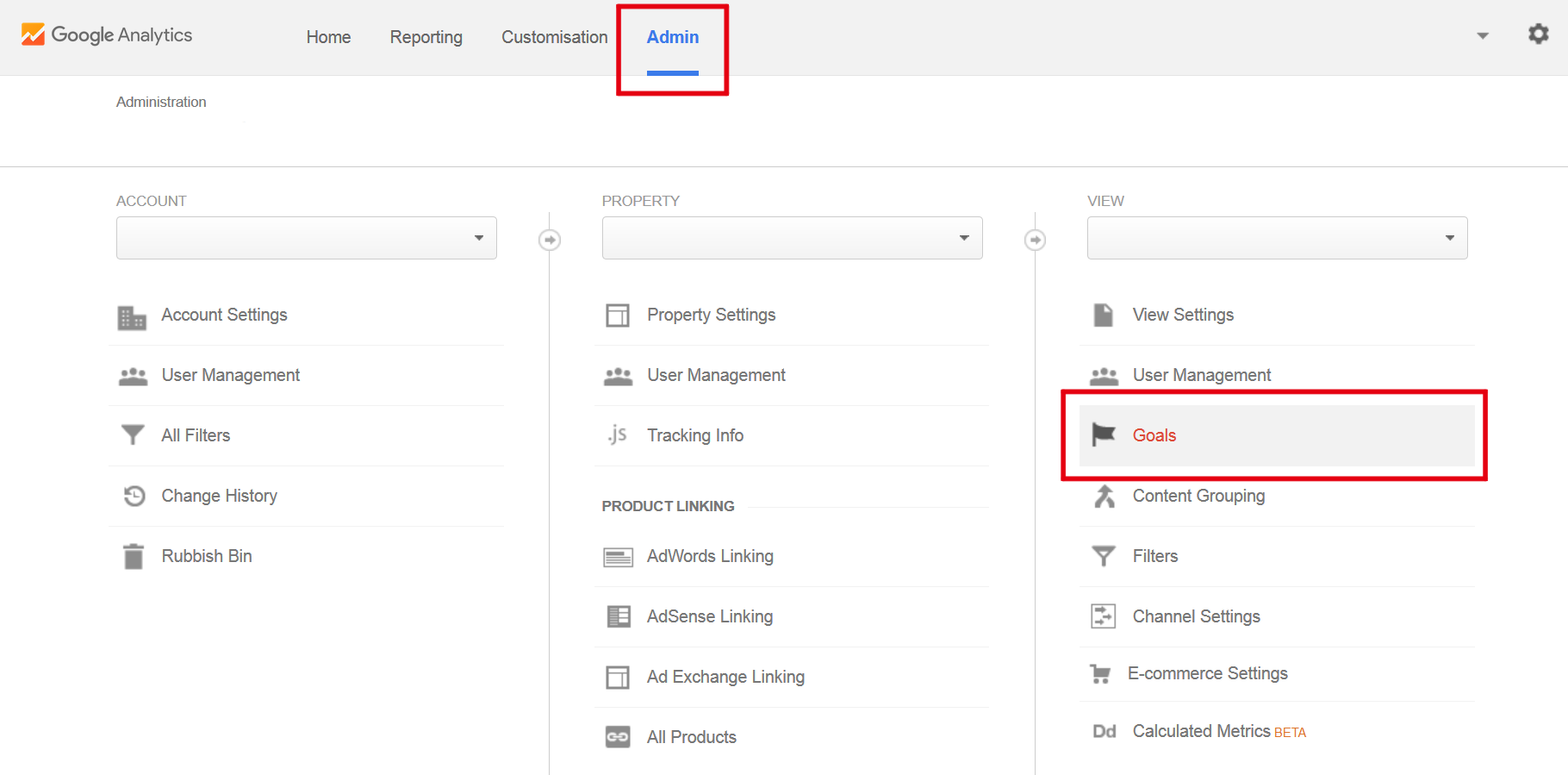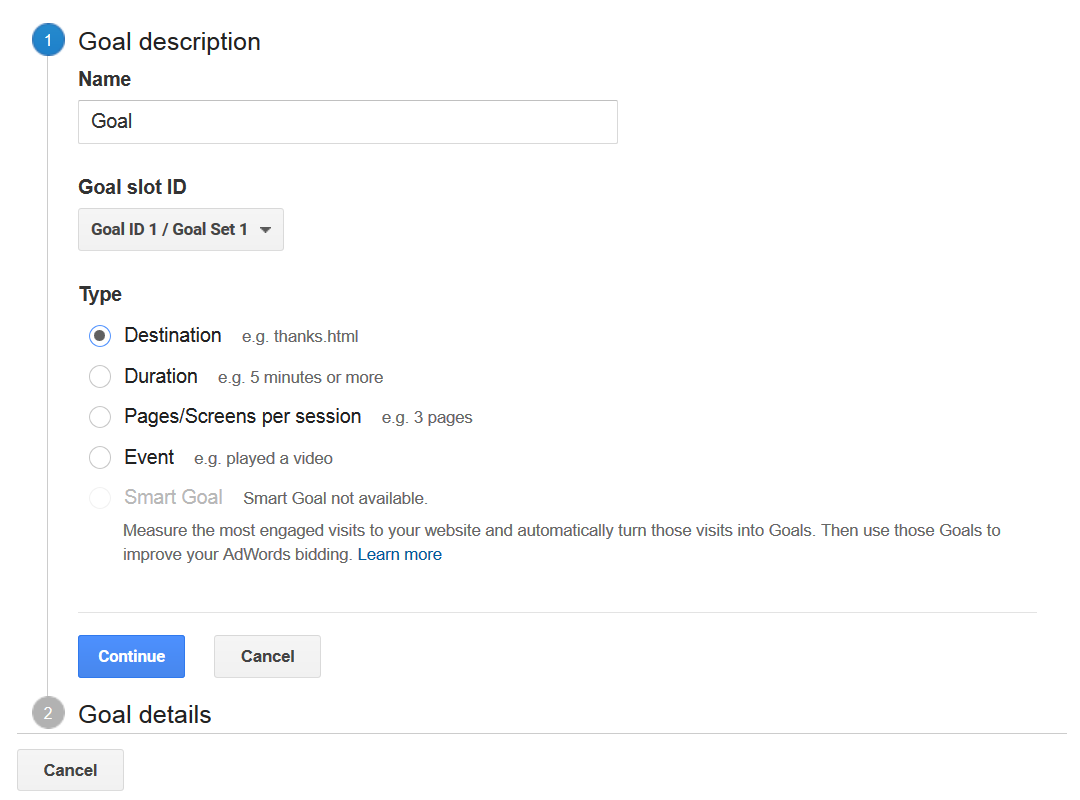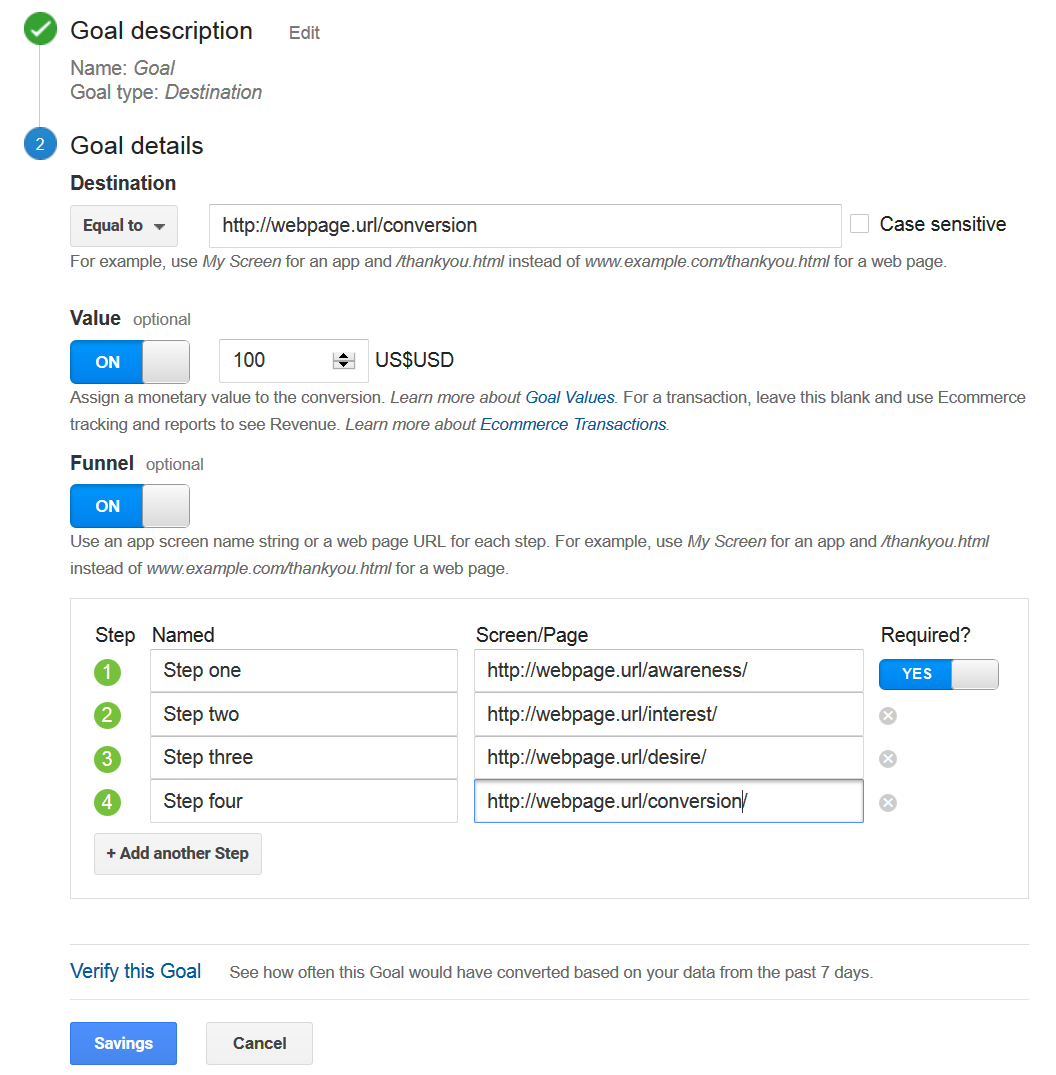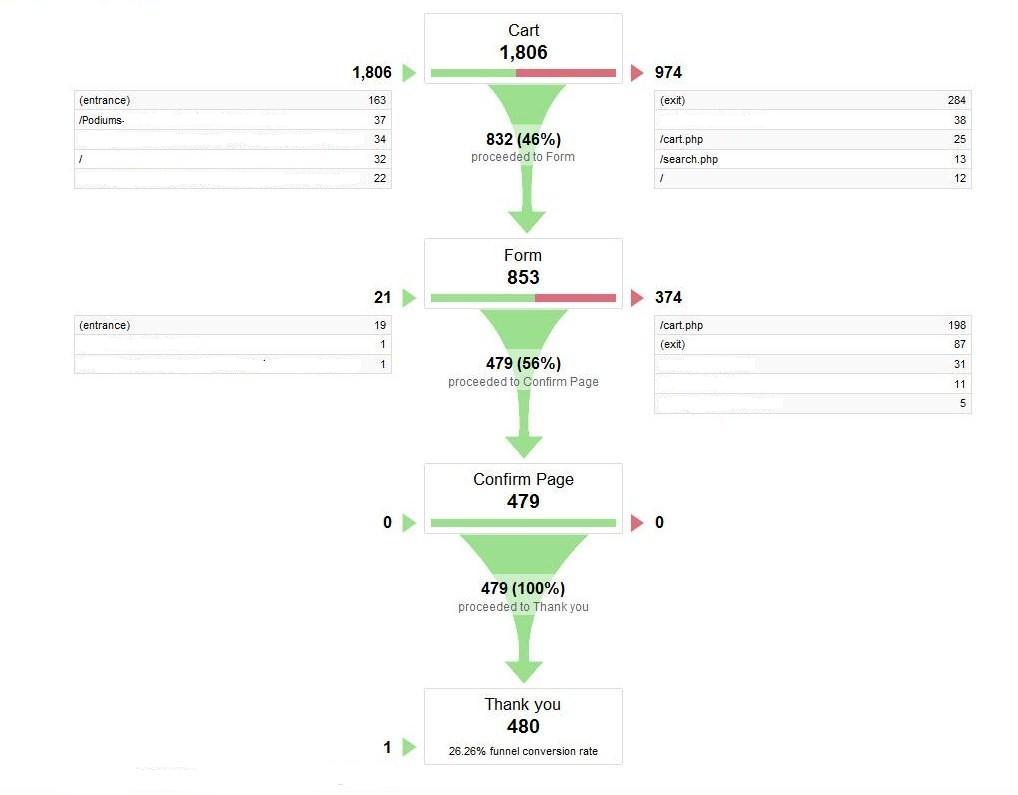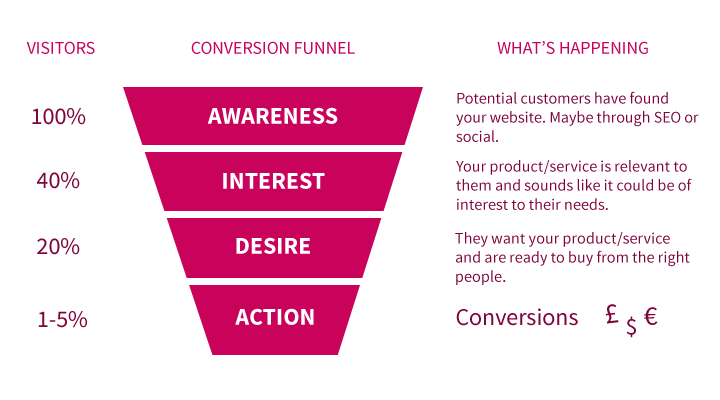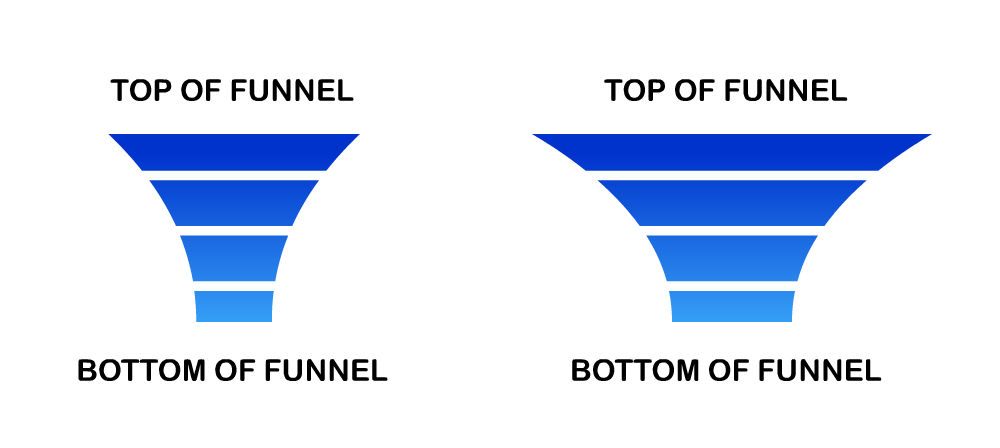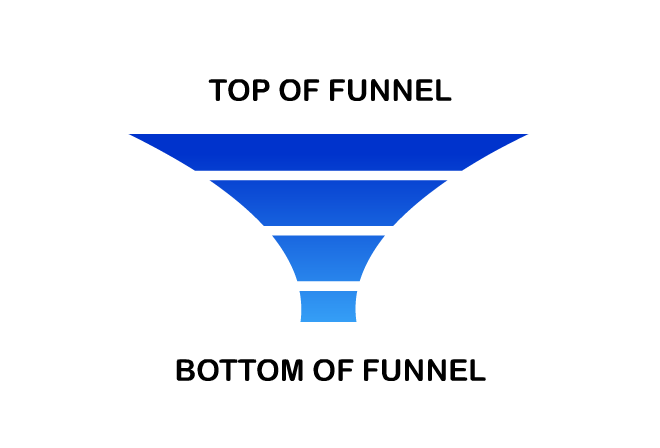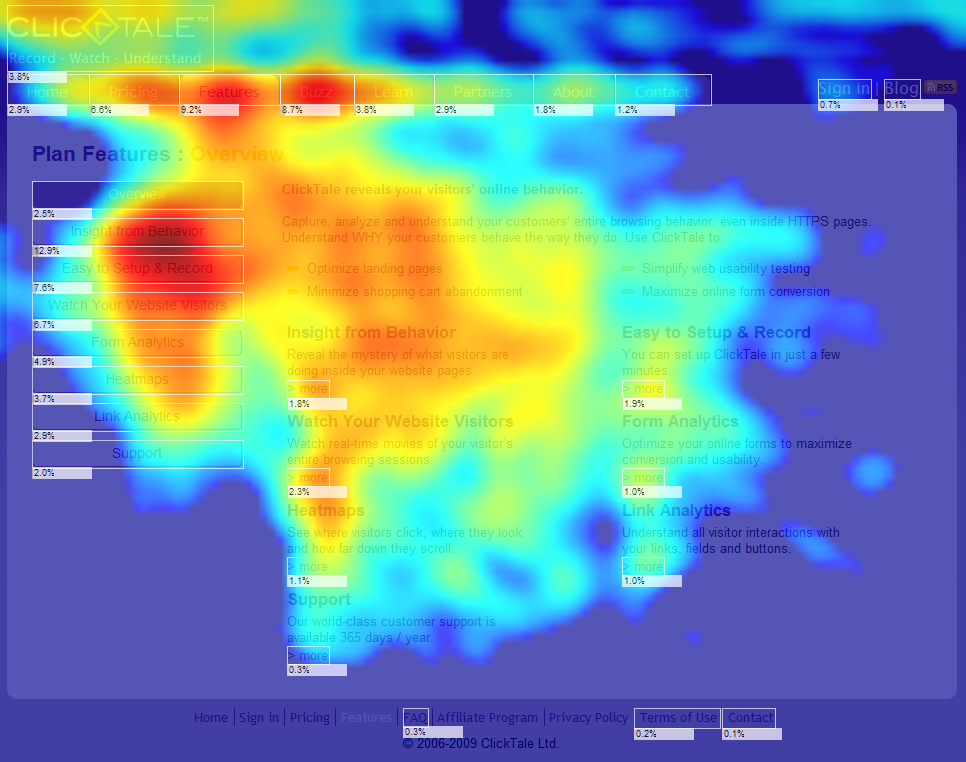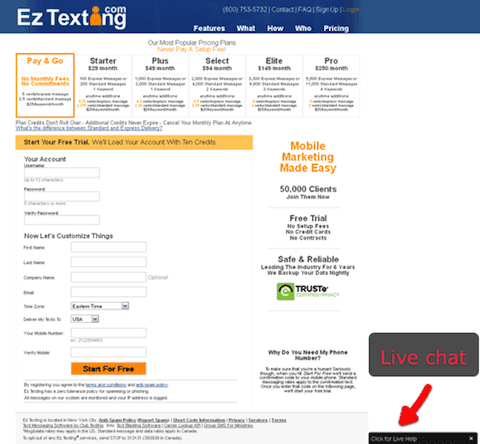Take aim: what’s the goal of your content marketing efforts?
Different marketers focus on a variety of metrics, including:
- Site traffic
- Social media interactions
- New leads
Ultimately, though, however you’re measuring the success of your marketing campaign, there’s one main goal that you should always be striving towards:
Sales.
If you’re going to go to all the trouble of investing in content creation, you want your marketing efforts to lead to conversions – to money spent and to new lifetime customers.
While other can metrics help you towards this goal, focusing too closely on a particular set of numbers can leave you unable to see the wood for all the trees.
Sometimes it’s necessary to take a step back to appreciate the whole picture.
Focusing too closely on a single element of your conversion funnel can mean failing to spot big problems that are causing you to lose potential customers.
- One common example is focusing too much on initial site traffic but failing to engage with users once they’re on the site.
- Another problem can be providing lots of support through the conversion funnel to the customer’s initial purchase, but dropping the ball when it comes to making repeat sales and creating a lifelong customer.
The specifics of content conversion rates may be slightly different for any website, but the general idea is basically the same. You want customers to:
- Gain awareness of your brand
- Develop interest in your services
- Feel a desire for your products
- Take action
So what does this look like in real life?
- Someone finds your website through a well-written blog post.
- They read through other content and materials on your site.
- They decide that your product will make their life easier.
- They purchase your product.
This is a simplified concept: in reality, you generally need to do a lot more handholding to help site visitors to continue to progress.
Throughout your conversion funnel, different pieces of content will be helpful in pushing potential customers along.
- Blogs and web pages draw in initial traffic.
- How-to videos, newsletters and webinars help develop visitors’ interest and desire.
- Brochures, demos and consultations lead to action and sales.
Note the shape of the conversion funnel pictured above: it’s a lot wider at the top.
A lot of people who will visit your site won’t progress further through the funnel, and you’re always going to have more traffic on your the site than you’ll have customers.
The wider you cast your initial net, however, the more conversions you’re likely to see.
That said, a wide funnel doesn’t necessarily mean a wide customer base if there’s something stopping customers from progressing from the top of the funnel to the bottom.
For this reason, it’s crucial to keep a close eye on your conversion funnel, how customers are engaging with it, and what can be streamlined.
Seeing the Big Picture
 The first thing you need to do to get a clear picture of how well your conversion funnel is working is to zoom out.
The first thing you need to do to get a clear picture of how well your conversion funnel is working is to zoom out.
You need to see not just how a single metric for your site is doing, but also how well your content is doing at leading site visitors through the whole conversion funnel.
Looking at your conversion funnel as a whole is best done through the use of analytics tools.
The simplest to use is Google Analytics. With Analytics, you can:
- Monitor specific goals within your conversion funnel.
- Spot trends that show where along the conversion funnel people are getting lost.
- Figure out what’s causing confusion to root out potential problems.
Using Analytics to monitor your conversion funnel is very straightforward.
First, log into Analytics and click on Admin, then navigate to Goals.
Next, clicking on ‘new goal’ on the Goals screen will let you enter the details for your conversion funnel test.
You’re then able to set the details of your funnel analysis.
Depending on what you want to measure, you can choose to monitor:
- The destination URL that site visitors click through to
- The length of time they spend on the site
- How many pages they look at before leaving
- Whether they engage with content, such as watching a video.
When it comes to measuring conversion funnels, choosing destination will work best, as this will let us see what pages site visitors click through before leaving, as well as help us spot where visitors are getting lost or stuck.
On the next screen, you get a few options for customizing your conversion funnel.
You can choose to set a value for conversions, which becomes useful in working out how much each site visitor and conversion is worth and helping measure to measure your overall return on investment.
After turning the funnel ‘on’, you’ll be able to enter a few different web addresses, which will help you track how far down the funnel users progress as they move from each step of the funnel to the next.
Making the first step ‘required’ means that Analytics will only keep track of site visitors who start at the appropriate place at the top of the conversion funnel, helping you to see exactly where site visitors are getting stuck.
After running the funnel analytics for a while, you’ll be able to generate a ‘Funnel Visualization Report’ which shows you clearly how well each stage of your conversion funnel is doing at encouraging users to move to the next stage.
On this report:
- Green is good – the more green there is in each bar, the better each page of your website is doing at leading visitors to the next stage.
- From this, you can see exactly which pages of your site are helping the conversion funnel, and which ones may be causing users concerns.
- You can use this information to find ways to streamline your website’s conversion process, as well as rooting out parts of the site that are holding you back.
Web Traffic Alone is Not the Big Picture
It’s important to note, however, that these analytics tools aren’t perfect.
- They only reflect site visitors who go on to make immediate purchases.
- Many of your customers will take time and a little gentle persuasion to move through every step of the conversion process.
- That said, Google Analytics can help give you an idea of which parts of your website’s interface, design and content are getting in the way of a seamless conversion funnel.
In reality, in order to get the best possible idea of how your conversion funnel holds up, it’s important to take website metrics into account alongside other key indicators of performance.
Beyond keeping track of how your site performs, there are a variety of other metrics that can be used to help analyze your conversion funnel.
In order to help the maximum number of site visitors to convert, you need to offer support at every level of the funnel.
Top of Funnel (TOFU) support is given through site content that draws in visitors. It’s often blanket content that appeals to a broad audience to make the top of the funnel as wide as possible
Bottom of Funnel (BOFU) support is generally more personalized, dealing with the specific concerns that an individual potential customer may have. This means taking more time per potential customer, but it balances out as far fewer leads make it to the bottom of the funnel.
BOFU interactions and assistance can be a little more difficult to track, as they’re a bit more personal than one-size-fits-all web design or content creation.
So what can you track?
It’s not always possible to get a sense of how invested a lead is in your product, and how far along the conversion funnel they are.
Instead, the easiest things to track throughout your conversion funnel are moments of engagement and action.
These can include:
- Download resources
- Signing up for a mailing list
- Social media engagement
- Click-throughs from emails
- Asking questions directly through contact channels
As such, it’s important to include a variety of calls to action for leads and potential customers, for several reasons:
- These actions naturally lead potential customers through the conversion funnel.
- They give you something practical to measure so that you can see what’s working well and what needs reworking.
- You’ll also be able to see which forms of engagement are the most popular for potential customers, and how you can provide a more streamlined process for them.
 The double bonus of tracking calls to action are that, as well as helping to gauge how well your conversion funnel is doing, they’ll also help to further drive progression.
The double bonus of tracking calls to action are that, as well as helping to gauge how well your conversion funnel is doing, they’ll also help to further drive progression.
The more actions you convince your potential customers to undertake, the faster they’ll progress.
This is why measuring actions taken by your leads is more effective than passive indicators of progression, such as website visits or quiet interaction with content that doesn’t require any commitment.
While the bottom of your funnel may be narrow, encouraging BOFU engagement will help naturally sift out disinterested users so that you can focus directly on the leads that may actually convert.
In this way, the process of measuring your conversion funnel’s success dovetails nicely with actually developing leads as they move through it. This makes for efficient and effective marketing that’s backed by consistent, numerical goals.
Optimizing Your Conversion Funnel
Once you’ve established where your conversion funnel is lacking, and what parts of the process are slowing down or damaging progress, you can start experimenting to fix holes, fill in cracks and reduce wasted efforts.
This can involve:
- Reworking your calls to action to focus on more beneficial behaviors.
- Streamlining web pages to remove unnecessary roadblocks.
- Finding ways to engage with solid leads and move them forward.
- Weeding out disinterested parties so that your focus is on potential customers who will actually convert.
There are many different ways to streamline your conversion funnel, each of which focuses on making the conversion process as simple, quick and easy as possible.
Getting the Right Focus
One of the big ways that a conversion funnel can go wrong is to focus on the wrong target demographic.
Often, marketers focus on extending the top of their conversion funnel to reach the widest possible audience.
- The logic here is that the wider the top of the funnel is, the wider the top of the funnel, the wider the bottom of the funnel will be, and the more leads will convert.
- This often means working to make content as accessible as possible, targeting a wide spectrum of demographics.
While it’s important to ensure that your content is reaching out as widely as possible, it’s a fallacy that a wide top of your funnel automatically means a wider bottom.
The problem, often, is that in appealing to the widest possible audience, marketers drum up huge site traffic, but a relatively small proportion of these visitors will actually be interested in taking action, engaging and converting.
- A site’s conversion funnel tracking will have a narrower bottom, as the site is drawing in an audience that won’t lead to sales.
- This can lead to a lot of frustration as marketers are unable to work out why their leads aren’t going anywhere.
Thankfully, there’s a simple fix for this: make sure your conversion funnel is focused on the right demographics.
The easiest way to do this is to focus on producing quality content that appeals to the type of customers who make it to the bottom of the funnel.
This means:
- Researching your core customer demographic to find out the kind of content they’d like to see more of.
- Creating demographic profiles, thinking about the needs of your core customers and what might hurt their chances of converting.
- Developing content which addresses concerns at all levels of the conversion funnel.
- Ensuring that TOFU content leads users naturally to BOFU content without a shift in tone or target audience that would confuse or distract leads.
This isn’t to say that all of your content should only focus on the small demographic of sure-fire customers. For one thing, that market doesn’t exist (or, at least, it rarely does in my experience).
But your content, while accessible, should be designed to appeal to those who’ll make purchases and convert, as well as leading site visitors naturally towards conversion.
Essentially, you want to remove as many roadblocks as possible from the conversion funnel. And one of the biggest roadblocks is often simply a lack of interest.
Prioritizing people who will convert will make your conversion funnel more effective – even if it means putting less emphasis on site traffic and a greater emphasis on the more difficult job of providing a unique, tailored user experience.
Removing Roadblocks
 One of the most important elements of your conversion funnel planning involves removing areas or elements that might distract, confuse, or otherwise put off potential leads.
One of the most important elements of your conversion funnel planning involves removing areas or elements that might distract, confuse, or otherwise put off potential leads.
Having used analytics tools to pinpoint weaknesses in your site’s design – and using other metrics to see where leads are failing to progress – it’s possible to spot elements of your campaign that might be tripping up users.
Among other things, you need to make sure:
- Your website design naturally leads users from TOFU content to BOFU content.
- Your BOFU content is not overlooked or underdeveloped
- You provide adequate support for leads who have questions or concerns.
There’s only one good way to make sure your funnel is as streamlined as possible: experimentation.
Explore, Rework and Test Again
The key to removing awkward or distracting elements from your site – and, thereby, speeding up and simplifying the conversion process – is experimentation and variation.
- What works for one site might not necessarily fit your conversion funnel.
- Even if your conversion rate is high, small tweaks could further improve your conversion process.
If you’re not running tests regularly, your conversion funnel is going to suffer as a result, as it’s through regular testing that you can identify and develop the best possible approach to leading site visitors towards conversion.
So what kind of tests should you run?
Heat Maps
It’s critically important that you spot the design elements on your website that are costing you conversions.
Similarly, it’s useful to know what design ideas are working well so that you can reuse them in other areas.
Heat maps provide a detailed visual understanding of what design ideas and content site visitors are engaging with.
Heat maps are helpful for your conversion funnel because:
- You can see exactly what site visitors are engaging with.
- You can spot when an element on the site is distracting from your intended user behavior.
By using heatmaps, one marketer found that users were often distracted by a navigation bar in the top left hand corner of the screen that linked to the blog, jobs and help pages for the site.
These small links were preventing many site visitors from taking the intended action. Removing them led to a 12% increase in conversions.
Overall, heat maps can help you streamline your site design to remove a lot of the negative, distracting or simply unnecessary site elements, helping you to lead site visitors on a straightforward path to conversion.
A/B Testing
You can also improve problem pages on your website, and improve the effectiveness of sluggish content, through A/B testing.
- Often, a small change can make a big difference to the conversion funnel’s effectiveness.
- A/B testing gives quantitative data that shows the most effective way to arrange your content, which works well alongside your existing metrics and goals.
Good A/B testing will also help indicate what support your leads may need before they’re willing to commit.
Ez Texting, for example, used A/B testing to identify that site visitors desperately wanted easier communication methods. The inclusion of a live chat function led to a 31% increase in conversions.
This just goes to show how paying attention to little design features that can improve the user experience can help to streamline the conversion funnel and increase sales.
It also shows how regular and consistent experimentation and testing can help to highlight the little tweaks that can be made to improve the presentation and delivery of content.
Facilitating a Natural Progression
The trick to getting the most out of each and every potential lead is helping them to make their way through the conversion funnel as quickly and simply as possible.
- You want the experience to be hassle-free so that users don’t get frustrated with finding relevant information.
- Content should preempt users’ needs and help them to progress naturally down the conversion funnel.
No funnel is perfect, but the savvy content marketer will make use of the tools at their disposal to fill in potholes and smooth over any speed-bumps that exist on the road to conversion.
Are you struggling to get your content funnels converting? If so, share how you’ll apply the techniques described here by leaving a comment below:
Images:
Pixabay, Pixabay, CrazyEgg, HubSpot, Pixabay, Google Analytics, Google Analytics, Google Analytics, Google Analytics, Pixabay, Analytics Ninja, Pixabay, Clicktale, VWO, Quicksprout, Pixabay.



